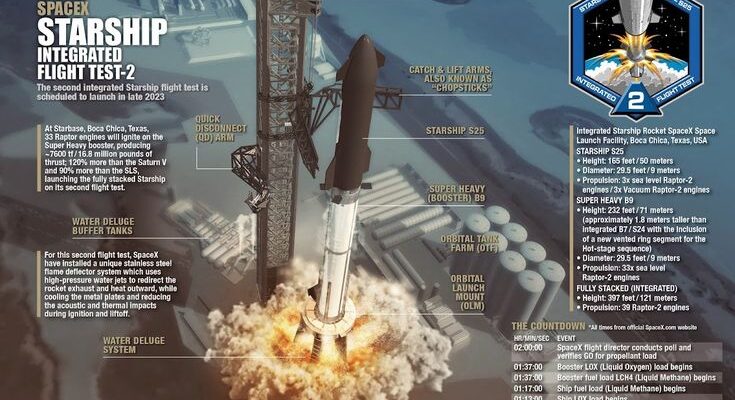On August 27, 2025, the aerospace community once again turned its gaze skyward as SpaceX’s colossal Starship rocket embarked on its tenth test flight. From its launch site, the towering vehicle ascended, reportedly following a nominal trajectory in its initial stages. While a single successful launch might appear routine in the grand scheme of spaceflight, each of these test flights represents a critical, carefully observed step in a relentless pursuit of humanity`s most ambitious spacefaring goals.
The Grand Vision: Starship`s Place in History
Starship isn`t just another rocket; it`s a paradigm shift. Designed to be a fully reusable, two-stage-to-orbit super heavy-lift launch vehicle, its ultimate purpose extends far beyond simply delivering satellites. SpaceX, under the visionary leadership of Elon Musk, conceives Starship as the primary transport system for humans and cargo to the Moon, Mars, and eventually, for rapid point-to-point travel on Earth itself. Its sheer scale—standing taller than many historic launch vehicles—is a physical testament to the audacious goals it aims to achieve.
A Marathon, Not a Sprint: The Iterative Development Philosophy
For those observing SpaceX`s journey, the number “ten” attached to this latest Starship test flight might evoke a knowing nod. The path to reliable, reusable spaceflight has been, to put it mildly, *explosive*. Early prototypes often concluded their test sequences with spectacular “rapid unscheduled disassemblies” (a rather polite term for explosions) upon landing. Each such event, however, was framed not as a failure, but as a data-rich learning opportunity.
This iterative, “build-test-learn” philosophy has been the bedrock of Starship`s development. Engineers analyze every millimeter of telemetry, every structural stress point, every engine firing sequence from each flight, no matter the outcome. The previous nine test flights, with their varied successes and challenges, have progressively refined the design, manufacturing processes, and operational protocols. From perfecting the intricate “belly flop” re-entry maneuver to mastering the complex Raptor engine ignitions, every lesson learned is directly integrated into the next iteration.
The Significance of the Tenth Ascent
This tenth test flight, therefore, isn`t merely a repetition; it`s a demonstration of accumulated knowledge. As reports confirm a nominal launch and initial ascent to the planned altitude, it suggests a continued maturation of Starship’s foundational systems. While the full flight profile, including booster separation, orbital insertion, re-entry, and landing, typically involves numerous critical milestones, the initial successful lift-off is always a powerful indicator of system readiness and crew confidence.
With each successful nominal phase, SpaceX inches closer to its larger objectives. These initial test phases focus on:
- Engine Performance: Ensuring the cluster of Raptor engines fires correctly and provides the expected thrust.
- Aerodynamic Stability: Verifying the vehicle`s structural integrity and control during the most strenuous part of the ascent through the atmosphere.
- Trajectory Control: Confirming guidance systems keep the massive rocket precisely on its intended path.
These are the fundamental building blocks upon which all future, more complex maneuvers depend. To achieve a “nominal trajectory” after ten attempts means the team is demonstrably closer to taming the beast they`ve built.
Looking Beyond Earth: What`s Next for Starship
The successful initial phase of the tenth test flight reinforces the trajectory not just of the rocket, but of SpaceX’s broader ambitions. The ultimate goal remains a fully operational Starship system capable of routine and cost-effective access to space. This entails:
- Orbital Test Flights: Reaching orbit and demonstrating full reusability of both the Starship spacecraft and its Super Heavy booster.
- In-Orbit Refueling: A critical technology for deep-space missions, allowing Starship to be topped off with propellant in low Earth orbit before heading to the Moon or Mars.
- Lunar Missions: Starship has been selected by NASA as the Human Landing System for the Artemis program, tasked with returning humans to the lunar surface.
- Mars Colonization: The long-term vision of establishing a self-sustaining human presence on Mars, for which Starship is the primary vehicle.
Each test flight, including this tenth one, brings these ambitious scenarios a step closer to reality. It’s a testament to audacious engineering, iterative development, and an unyielding commitment to extending humanity`s reach beyond Earth.
The tenth test flight of Starship might be just another dot on a very long timeline, but it’s a dot that symbolizes resilience, innovation, and an unwavering commitment to a future where space travel is as common as air travel today. As Starship continues its journey, both physically into the atmosphere and metaphorically through its development phases, it reminds us that the greatest leaps often begin with many small, meticulously observed steps.









